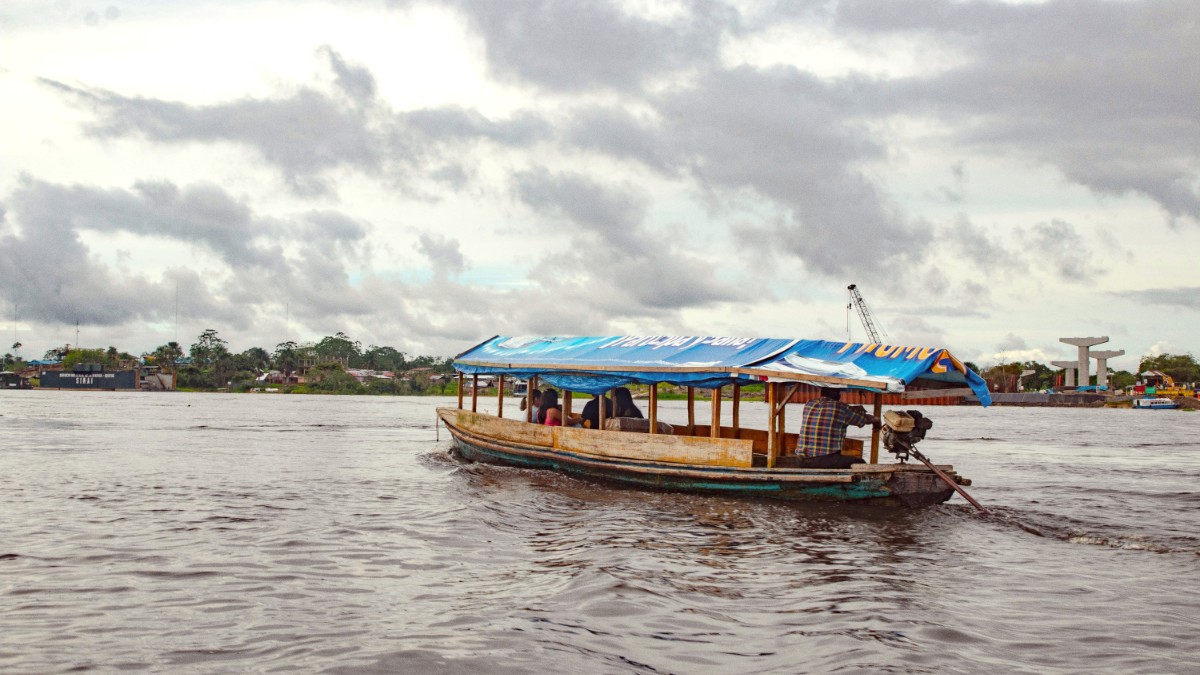
Amazon Basin, Peru
Iquitos city itself holds historical buildings and markets. These spots tell stories of the rubber boom era and local daily life.
Wander through the streets to see European-influenced architecture mixed with Amazonian charm. The city's unique position as an island of concrete in the vast jungle makes its urban features distinct.
Many local guides offer walking tours to explore these urban gems.
A unique neighborhood where houses float on rafts during high water seasons.
Take a small boat tour to observe daily life along the riverbanks.
Witness traditional fishing methods or try piranha fishing yourself.
Pink and gray river dolphins are often seen in the river sections.
A calm lagoon known for its biodiversity and local legends.
The main reason many travel to Iquitos is to experience the Amazon Rainforest directly. Deep jungle excursions offer wildlife viewing and cultural interactions.
Multi-day cruises on the Amazon River access remote areas and offer comfortable exploration.
Boat tours specifically for observing pink and gray river dolphins, especially at sunrise or sunset.
A common activity on river tours, providing an unique catch-and-release experience.
Paddle through quiet tributaries and flooded forests for closer wildlife views.
Many species of birds nest or feed along the riverbanks, suitable for observation from a boat.
Spot nocturnal animals like caimans and snakes with guides using spotlights.
The Amazon is home to incredible biodiversity, offering opportunities to see monkeys, sloths, birds, and more. Patience is .
Visit local villages to learn about traditional ways of life, customs, and crafts. Many tours include these cultural exchanges.
Guided walks through the rainforest reveal fascinating plants, insects, and smaller animals. Boots are typically worn.
Many activities in Iquitos are designed with conservation in mind. Support organizations that promote environmental protection.
Iquitos weather varies by season. The high-water season (November-May) means more flooded forests, accessible by boat. Low-water season (June-October) opens up walking trails.
Most jungle excursions are multi-day packages from lodges. Day trips from the city are possible for closer attractions like the Manatee Rescue Center or Pilpintuwasi.
A local guide dramatically enhances a visit to the Amazon. Their knowledge of flora, fauna, and local culture is extensive.
Mototaxis (motorcycle taxis) are the dominant form of local transportation. Negotiate fares before beginning your journey.
Observe animals from a distance. Do not feed wildlife. Follow your guide's instructions for animal interactions. Responsible photography promotes conservation.
Pack light, breathable clothing. Long sleeves and pants offer protection from sun and insects. Quick-drying fabrics are advantageous.
Pre-booking tours, especially for jungle excursions, is a good idea. This secures your spot and allows for better planning.
Confirm tour dates, meeting points, and inclusions directly with the tour operator before your arrival.
Carry a copy of your passport or ID for registration purposes on tours, especially to national parks.
Carry Peruvian Soles (PEN) for small purchases, tips, and mototaxi fares. ATMs are available in Iquitos.
A good resource for pre-booking various tours and activities in Iquitos and its surroundings.
Explore Iquitos Tours on GetYourGuideMany local agencies operate from Iquitos. Check reviews before booking. Personal recommendations are valuable.
Many jungle lodges include guided tours and excursions within their multi-day stay packages. These streamline your adventure.
For longer, immersive Amazon experiences, consider booking a multi-day river cruise. These often have set itineraries.
For personalized experiences, a private guide can tailor activities to your specific interests. Arrange this in advance.
Many city attractions are easily accessible on foot. A self-guided walk through the center reveals Iquitos' unique character.
The Malecón Tarapacá is ideal for relaxed sightseeing. Enjoy sunset views, local food stalls, and river activity.
Interact with locals whenever possible. They often share valuable insights and recommendations for authentic experiences.
A smile and a few words in Spanish often open doors to memorable interactions.
Responsible tourism protects the fragile Amazonian ecosystem and local communities. Your actions contribute to the preservation of this unique environment.
Reduce your environmental footprint. Support sustainable practices and avoid negatively affecting the natural habitat.
Engage respectfully with local communities. Support their economies through ethical means.
The Amazon is home to sensitive wildlife. Treat all animals with respect and observe them from a safe distance.
Your guide can share knowledge on safe and ethical animal observation.
Proper waste disposal is in such a delicate ecosystem. Minimize what you bring in and take out all non-biodegradable items.
Many lodges have specific guidelines for waste, please adhere to them.
Protect your health to fully enjoy your Amazon adventure. Basic precautions can prevent common travel ailments.
Consult your doctor regarding vaccinations well before your trip.
Locate visitor information centers for maps and local guidance.
Some protected areas require entrance fees or permits. Confirm these with your tour operator.
Keep a list of emergency numbers, including local police and your embassy or consulate.